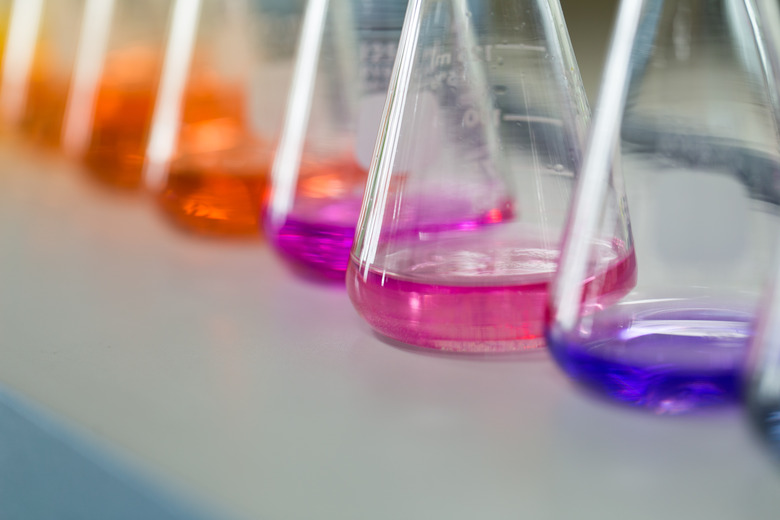Characteristics Of Good Buffers
A buffer is a water-based solution containing a mixture of either an acid and its conjugate base, or a base and its conjugate acid. The acids and bases used in a buffer are quite weak and when a small amount of a strong acid or base is added, the pH doesn't change significantly. In 1966, Dr. Norman Good described a set of 12 buffers called Good buffers. The characteristics of these buffers make them very helpful in biological and biochemical research.
pKa
pKa
The pKa is the logarithmic form of the acid dissociation constant of the weak acid in the buffer. It is used to represent the strength of the weak acid in the buffer solution. Because Good buffers are widely used in biological research, and since neutral or near-neutral conditions are required for most biological reactions to take place, the pKa of the weak acid used in a Good buffer is in the range corresponding to a pH range of 6 to 8.
Solubility
Solubility
Good buffers have a high solubility in water, since most biological systems naturally use water as their solvent. Also, the solubility level of Good buffers in organic solvents such as fats and oils is low. This prevents the Good buffer from accumulating in biological compartments such as cell membranes.
Membrane Impermeability
Membrane Impermeability
If the buffer passes through a cell membrane, it can accumulate inside the cell and alter the cell and affect the results of the experiment. Therefore, Good buffers will not pass through cell membranes.
Minimal Salt Effects
Minimal Salt Effects
High salinity can often have dehydrating effects on cells. Furthermore, some salts also react with other constituents present in the setup to form complications in the research. A Good buffer has minimal ionic content to reduce these complications.
Well-behaved Cation Interactions
Well-behaved Cation Interactions
Many buffers react with cation ligands to form complexes which can accumulate in different regions of the setup and effect the research. An ideal Good buffer does not form such complexes, but such buffers are practically impossible to produce. In general, Good buffers form a small number of complexes that are soluble, to prevent any accumulation that can affect the research.
Stability
Stability
Buffers are often used in research on reactions involving enzymes. A Good buffer is chemically stable enough to resist degradation that enzymes could cause. Furthermore, a Good buffer is also resistant to non-enzymatic degradation by other components of the setup.
Non-Toxicity
Non-Toxicity
Since Good buffers are often used in research involving living cells, they are required to be non-toxic to the cells used in the experiment.
Cite This Article
MLA
Alo, B.T.. "Characteristics Of Good Buffers" sciencing.com, https://www.sciencing.com/characteristics-good-buffers-6246173/. 13 March 2018.
APA
Alo, B.T.. (2018, March 13). Characteristics Of Good Buffers. sciencing.com. Retrieved from https://www.sciencing.com/characteristics-good-buffers-6246173/
Chicago
Alo, B.T.. Characteristics Of Good Buffers last modified March 24, 2022. https://www.sciencing.com/characteristics-good-buffers-6246173/
